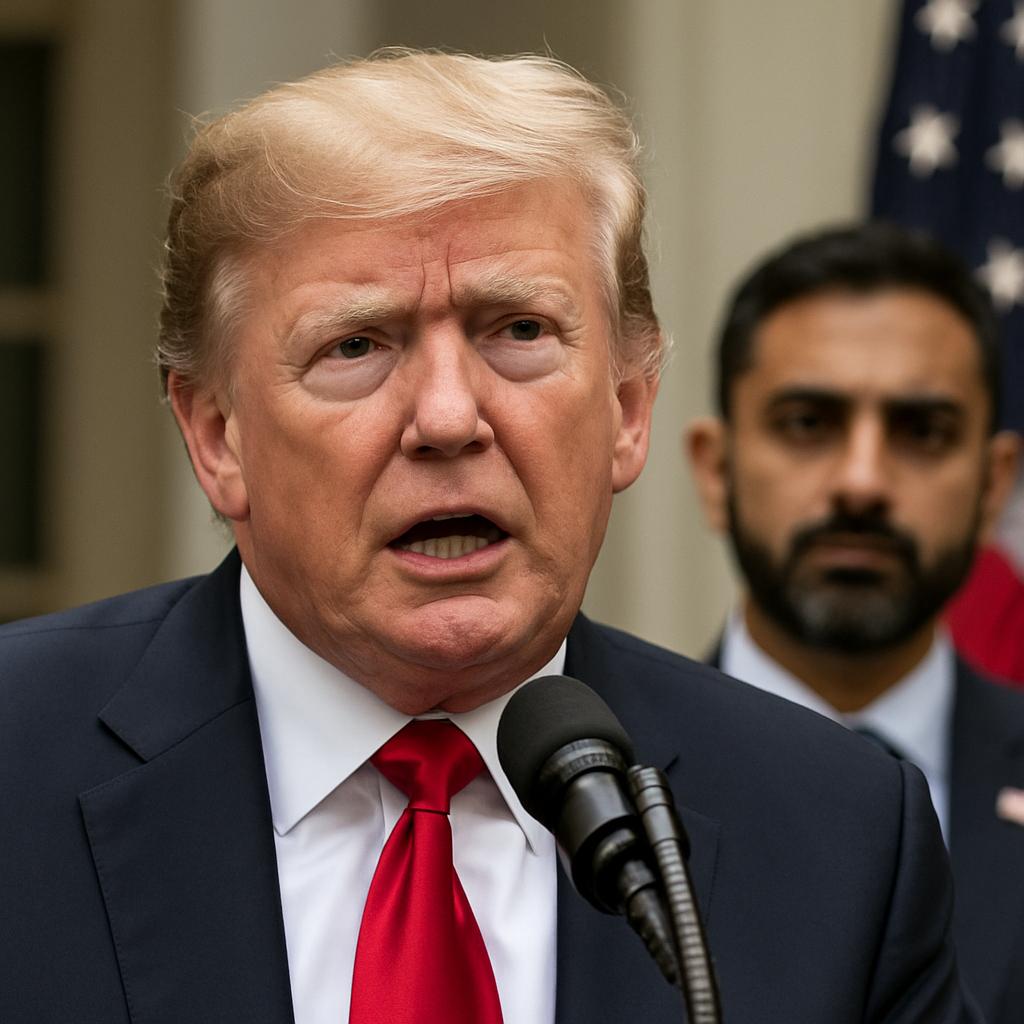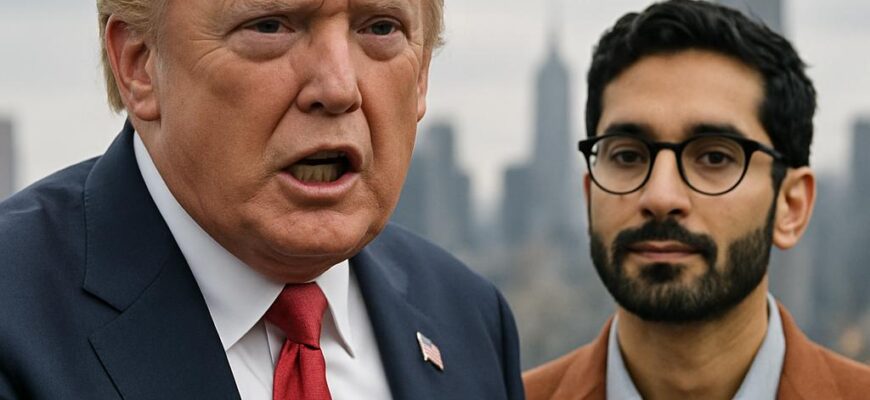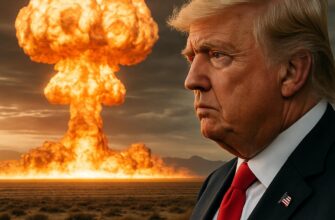Reports that Donald Trump threatened New York with sanctions if Mamdani wins. have ricocheted through political feeds, prompting alarm, legal debate, and a flurry of fact-checking. The allegation, whether framed as an explicit command or a campaign-style warning, raises a familiar question: how far can a president go to influence state and local outcomes? This article walks through the claims, the legal boundaries, historical parallels, and the practical fallout for New Yorkers and federal governance.
- What the reports actually say
- Understanding the practical meaning of “sanctions” domestically
- What the law allows and what courts have said
- Precedents: sanctuary cities and other clashes
- Possible federal actions and their legal constraints
- How New York officials and voters might react
- What might happen next: likely sequences
- Steps likely to follow in the short term
- The strategic calculus for a president
- Why constitutional norms matter here
- My perspective from covering federal-state clashes
- What ordinary New Yorkers should watch for
What the reports actually say
The accounts circulating in media and on social platforms describe a public comment in which then-president or presidential candidate Donald Trump warned of punitive measures if Mamdani — a candidate who has energized parts of New York’s electorate — were to prevail. Journalists and commentators have treated the statement as an ultimatum rather than rhetorical hyperbole, which is why legal scholars quickly weighed in. Because the reporting varies by outlet and moment, it’s important to separate what was reported from what can be proven in court.
At this stage the charge is best treated as an allegation: multiple outlets summarized or quoted the relevant remarks, and opponents seized them as an attack on democratic norms. That dynamic — a public statement followed by legal and political pushback — is familiar in modern American contests, but the key question remains: could such a threat lawfully be carried out?
Understanding the practical meaning of “sanctions” domestically
In international affairs, sanctions usually mean trade restrictions, asset freezes, or travel bans. Applied domestically, the term is murkier: it can encompass anything from withholding conditional federal grants to directing regulatory agencies to scrutinize a jurisdiction more closely. The idea of a president ordering punitive domestic actions against a state or city because of an election outcome is unusual and raises immediate constitutional concerns.
Legal experts focus not only on the literal possibility of actions — many are within the president’s or executive branch’s toolkit — but on the motives and means. The U.S. Constitution and Supreme Court precedents limit the federal government’s ability to coerce or punish states for political reasons, so the procedural path to any real “sanction” would be fraught and likely litigated.
What the law allows and what courts have said

Two Supreme Court decisions often frame the limits on federal leverage over states. In South Dakota v. Dole (1987), the Court upheld Congress’s power to attach conditions to federal highway funds, so long as those conditions are related to the federal interest and not unduly coercive. Later, in NFIB v. Sebelius (2012), the Court struck down a scheme it saw as coercive — a warning that the federal government cannot use massive funding threats to force compliance on matters of state sovereignty.
Those precedents create a narrow path: the federal government can attach conditions and use spending power, but it cannot impose conditions so extreme that a state has no real choice. If a president’s threat looked like retaliation purely for the outcome of an election, courts would likely scrutinize both motive and effect very closely.
Precedents: sanctuary cities and other clashes
We have modern examples of federal pressure on cities and states to enforce federal priorities. During the Trump administration, the White House threatened to withhold federal grants from “sanctuary” jurisdictions and pursued legal and policy tools aimed at compelling cooperation on immigration enforcement. Those moves produced lawsuits, regulatory changes, and mixed results in courts and Congress.
Those episodes show two things: first, the federal government has mechanisms to incentivize compliance, and second, those mechanisms can be checked by litigation and public resistance. They give a roadmap for how officials and advocates might respond if a president tries to follow through on threats tied to an election result.
Possible federal actions and their legal constraints
Not every conceivable response is legally straightforward. Below is a short table comparing potential federal actions against some likely legal barriers and political consequences.
| Potential federal action | Legal hurdles | Political impact |
|---|---|---|
| Withholding discretionary grants | Must be tied to statutory conditions; coerced forfeiture may be unlawful | Immediate service disruptions; public backlash |
| Increased federal investigations or audits | Legal basis required; perceived politicization can prompt oversight | Long-term administrative burden; reputational damage |
| Executive orders restricting cooperation | Subject to statutory and constitutional limits; courts can enjoin | Policy uncertainty; legal challenges |
| Direct denial of disaster or emergency aid | Statutory frameworks guide eligibility; politically sensitive | Humanitarian and political consequences; likely litigation |
How New York officials and voters might react
Officials in New York — whether in Albany or in city government — have a toolbox of responses available. They could pursue litigation, seek congressional protections for funding streams, or mobilize public opinion. Local leaders also routinely plan for contingencies; the prospect of targeted federal pressure would likely accelerate those preparations.
Voters respond to both rhetoric and tangible impacts. If services were interrupted or funds tightened, public sentiment could shift, but it’s hard to forecast which way. Historically, perceived federal overreach can backfire on the initiator politically, especially in a state as politically energized and media-saturated as New York.
What might happen next: likely sequences
When high-profile threats meet entrenched legal limits, a familiar sequence often unfolds: a public statement, immediate pushback from local leaders, legal filings alleging constitutional violations, and a period of uncertainty while courts consider preliminary relief. Meanwhile, Congress and independent watchdogs may open inquiries depending on the severity and the evidence.
It’s realistic to expect litigation to be the primary arena where the boundary is tested. Courts move more slowly than news cycles, so the practical effects — or the lack of them — in the short term can shape public perception even before a legal resolution is reached.
Steps likely to follow in the short term
- Public statements and clarifications from the parties involved.
- Rapid legal analysis by state attorneys general and civil liberties groups.
- Possible emergency filings seeking injunctions to prevent any action tied to the election result.
- Congressional queries or hearings if federal funds or agencies are implicated.
The strategic calculus for a president
From a strategic standpoint, threats can serve multiple political purposes: energizing a base, intimidating opponents, or signaling seriousness. But when threats touch constitutional lines, the calculus changes — courts, independent institutions, and the electorate all become active constraints. A president must weigh the immediate political benefit against long-term institutional costs and legal exposure.
Those costs are not abstract. The president’s power depends on norms and cooperation among state and federal officials; repeated willingness to weaponize administrative authority risks eroding those relationships permanently. In other words, short-term signals can produce long-term institutional damage.
Why constitutional norms matter here
At stake in any confrontation like this is not just one election or one city’s budget; it’s the broader question of how power is used and limited in a divided federation. The constitutional design assumes friction, but it also anticipates restraint: elected officials can disagree fiercely, but constitutional checks and independent adjudication should prevent raw political retaliation.
When that restraint is questioned, legal doctrines developed over decades — from conditional spending rules to the separation of powers — become essential guardrails. Those doctrines are imperfect, but they remain the principal tools for resolving disputes that pit presidential statements against states’ rights and voter choice.
My perspective from covering federal-state clashes
Having followed several federal-state confrontations over funding, immigration, and disaster response, I’ve seen how quickly rhetoric can calcify into policy and how often early threats dissipate under legal fire. Officials on both sides tend to posture publicly while negotiating privately; litigation then becomes the referee that clarifies the rules.
That pattern doesn’t guarantee predictability. Each case has unique facts and political dynamics. But the common thread is that institutions—courts, Congress, and local governments—generally limit the most extreme scenarios, ensuring that the constitutional process, while messy, ultimately adjudicates contested claims.
What ordinary New Yorkers should watch for

For people living in New York, the practical signals to monitor are simple: will essential services be affected, will grant contracts be delayed, and will legal authorities in the state or city file suit? Those are the concrete impacts that matter more than political rhetoric. Citizens can also follow how their local representatives respond and whether Congress moves to protect specific funding streams.
Staying informed from credible news sources, attending public meetings, and contacting elected officials are practical steps voters can take if they’re concerned about potential federal overreach. Civic engagement matters most when institutional checks are being tested.
If you want deeper coverage and ongoing analysis of this story and others like it, please visit https://themors.com/ and read other materials from our website.









